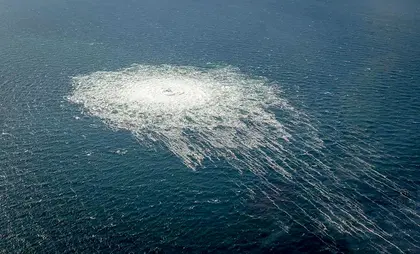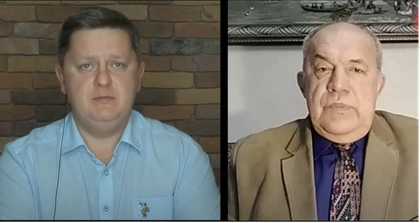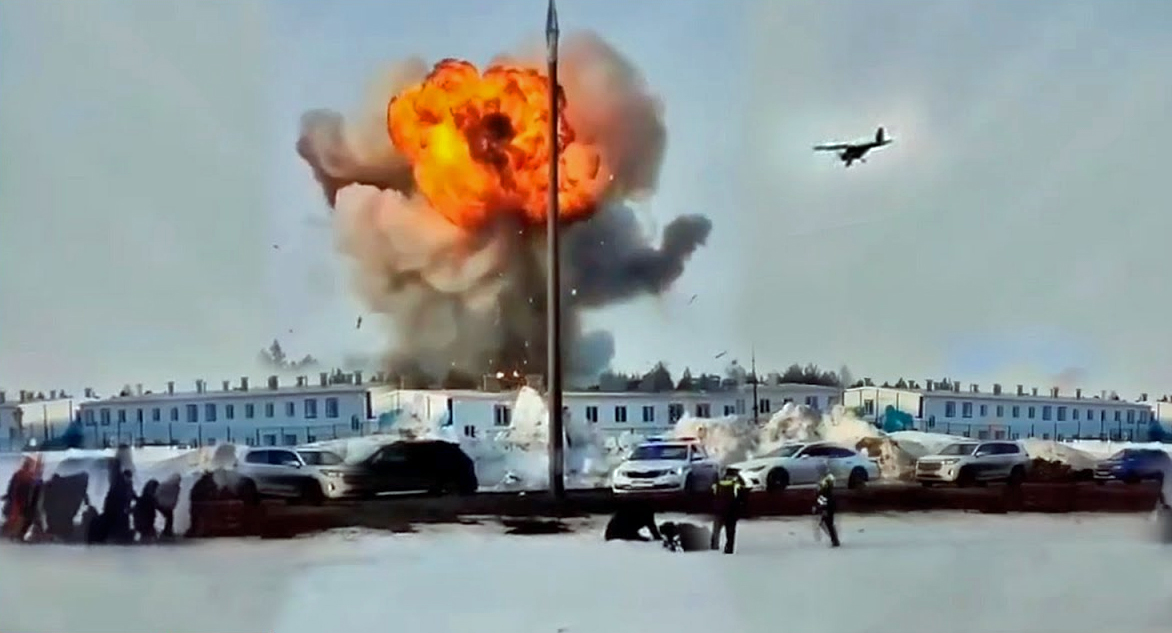On June 6 the Washington Post published an article in which it alleged that three months before the Nord Stream natural gas pipeline was blown up, “the Biden administration learned from a close ally that the Ukrainian military had planned a covert attack on the undersea network, using a small team of divers who reported directly to the commander in chief of the Ukrainian armed forces.”
The Washington Post released the article – purportedly based on the months-old Discord leak documents which are never shown – the very day that Ukraine was reeling from a sabotage attack that was almost certainly perpetrated by Russia and quickly turning into one of the century’s worst ecological catastrophes.
JOIN US ON TELEGRAM
Follow our coverage of the war on the @Kyivpost_official.
Remind me. What happened with Nord Stream?
On Sept. 26, 2022, three separate leaks erupted from the Nord Stream 1 and 2 underwater natural gas pipelines connecting Russia and Germany. The explosions occurred at sea, near Bornholm, an island belonging to Denmark.
The pipelines had already been a sore point for the United States during the Trump administration and especially for countries like Poland and Ukraine, which feared Nord Stream would give Russia the ability to blackmail Europe due to its increasing dependence on cheap Russian gas.
The US immediately accused Russia.
The Swedes, as well as other countries around the Baltic Sea, began investigations that seemed to peter out along the way, suggesting they had found some information that might be deemed unpleasant for some allies.

Special Ops Recruiters Provided a Unique Christmas Greeting to Ukraine
The Russians, meanwhile, pointed the finger at the British.
So, who did it?
On Feb. 8, 2023, Seymour Hersh, the controversial American investigative journalist, self-published a lengthy exposé claiming the US, with the help of Norway, sabotaged the Nord Stream natural gas pipeline in a covert operation.
Although based on only a single anonymous source, which allowed Hersh’s detractors to question the veracity of his claims, the article raised many questions.
The White House categorically denied Hersh’s claim as “false, a complete fiction.” The CIA also responded to the reporter’s request for comment in no uncertain terms: “This claim is completely and utterly false.”
Could the Americans have been behind it?
That’s certainly what Hersh argues. And in his report, he makes no allusion to any possible Ukrainian involvement.
All he says is that in the summer before the full-scale invasion, when the Biden Administration decided to lift sanctions against the Nord Stream pipeline, which the previous Trump administration had imposed, Biden’s officials “reportedly urged Ukrainian President Volodymyr Zelensky, by then facing a threat of Russian invasion, not to criticize the move.”
The Hersh story, however, was roundly criticized for its relying on a single unnamed source.
So, how did the Ukrainians fit in?
Less than a month after Hersh’s article came out, The New York Times, The Washington Post, and a group of German media outlets (Die Zeit, ARD and SWR), all with deep government contacts published a report suggesting that a pro-Ukrainian sabotage group had carried out the attack.
Hersh’s supporters (and even some detractors) called the vague report –describing how a small group of saboteurs rented a yacht in Germany and conducted a dive of more than 70 meters on the floor of the Baltic Sea – far-fetched, to say the least. Indeed, some considered the entire news report to be a classic CIA-fed story meant to muddy the waters and take the focus off accusations pointed at Washington.
To add to this suspicion, conspiracy theorists noted the fact that reports explicitly exonerated Ukrainian President Zelensky, claiming that “officials have previously described a system created by Ukraine’s government that insulates Mr. Zelensky from covert action programs.”
The New York Times went on to explain how “that allows parts of the Ukrainian government to use pro-Ukrainian groups or sympathizers in Russia to conduct covert attacks, and for Mr. Zelensky to deny responsibility for such actions.”
But conspiracy theorists were not the only ones to ridicule the report. Chuck Pfarrer, a former US Navy Seal who has been actively covering the war in Ukraine with detailed operational analysis said on June 6 that the Washington Post is again trying to “hang the Nord Stream sabotage on Ukraine.”
He added: “unnamed sources” are trying to “sell the operationally impossible story that a rented sailboat deployed saturation divers to conduct the multi-pronged attack. Didn’t happen.”
MISSION NOT POSSIBLE: The Wash. Post AGAIN tries to hang Nordstream sabotage on Ukraine. Unnamed sources try to sell the operationally IMPOSSIBLE story that a rented sailboat deployed saturation divers to conduct the multi-pronged attack. Didn’t happen.https://t.co/1Syh93bqXd
— Chuck Pfarrer | Indications & Warnings | (@ChuckPfarrer) June 6, 2023
So, what’s the new twist in this old story?
The new twist is that documents from the Discord leaks, which The Washington Post obtained from a friend of the original leaker, show that “the European intelligence reporting [claiming a Ukrainian group of saboteurs was responsible for the Nord Stream blasts] was shared on the chat platform Discord, allegedly by Air National Guard member Jack Teixeira.”
Moreover, The Washington Post refers to unnamed European intelligence officials from an undisclosed allied country who produced an intelligence report “based on information obtained from an [unnamed] individual in Ukraine.”
Later in the article, the authors throw some shade on the individual: “The CIA initially questioned the credibility of the information, in part because the source in Ukraine who provided the details had not yet established a track record of producing reliable information, according to officials familiar with the matter.”
In the new version of the story, the rented yacht is again mentioned: “Investigators have matched explosive residue found on the pipeline to traces found inside the cabin of the yacht, called Andromeda.”
Also, in the new version of story, the Ukrainian president is accorded plausible deniability of foreknowledge: “The European intelligence made clear that the would-be attackers were not rogue operatives. All those involved reported directly to Gen. Valery Zaluzhny, the country’s highest-ranking military officer, who was put in charge so that Ukraine’s president, Volodymyr Zelensky, wouldn’t know about the operation, the intelligence report said.”
Would Zaluzhny do something so brazen and risky in terms of angering important allies without Zelensky’s approval?
It’s probably a question no person “in the know” would respond to in any manner but anonymously. In fact, the article diligently states: “Ukrainian officials, who have previously denied the country was involved in the Nord Stream attack, did not respond to requests for comment.”
With attention focused on the obvious act of sabotage committed by Russian forces blowing up a massive dam on the Dnipro River, social media has seen a wave of cynical commentary on what is interpreted as The Washington Post’s cynical timing in deciding to reheat an old sabotage story.
Some might even claim something rotten is bubbling up from the seabed near an island belonging to the state of Denmark.
You can also highlight the text and press Ctrl + Enter






